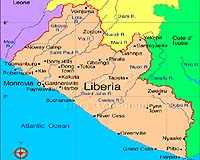| . |  |
. |
Marrero, Louisiana (AFP) June 5, 2010 Engulfed by devastating floods during Hurricane Katrina five years ago, New Orleans now fears for its surrounding protective marshes, threatened by a spreading oil slick. With entire neighborhoods sitting below sea level, the city of jazz is encircled with levees and flood walls along the Mississippi River and Lake Pontchartrain. But the August 2005 hurricane caused several breaches in the protective barriers, helping lead to the death of nearly 2,000 people in the city founded by the French three centuries ago. The levees are only the last defense. First come sprawling marshlands that help slow rising waters. With the new hurricane season forecast to be worse than average, a surge of sea levels could easily reach New Orleans, located just some 30 miles (50 kilometers) from the Gulf of Mexico's coastline, just as they did five years ago. But this time, the waters would carry material toxic for vegetation and wildlife: the oil that has soiled the gulf waters and shoreline for over six weeks. "You could see oil in the city of New Orleans," said David Muth, chief of planning and resource stewardship for Jean Lafitte National Historic Park and Preserve, home to the Barataria Preserve a dozen miles (20 km) south of the city. Three hundred species of plants, as well as thousands of birds, alligators, toads and squirrels populate these wild wetlands linked to the sea by the famed bayous. This fragile ecosystem forms a "hurricane buffer" for communities like New Orleans, noted Muth. "In the worst-case scenario, the oil would kill the plants and kill the roots and then the soil would disappear as a result of erosion," he added. Yet Louisiana's coastal marshlands have been disappearing at a frenzied rate ever since the French began building levees around the Mississippi River in 1721. Today, the fourth largest river in the world travels through the region without leaving nourishing sediments on the bottom of marshes. "To let ships pass, we dredged the Mississippi River and changed the way the river works. We don't allow it to nourish the marshes anymore," lamented Muth. As a result, an average of some 25 square miles (65 square km) of wetlands are disappearing each year, the equivalent of a soccer field every 20 minutes, according to Gulf of Mexico specialist Larry McKinney of Texas A&M University at Corpus Christi. "During Katrina, 135 square miles (350 square km) of wetlands disappeared overnight. It never came back. This is all under water now," he noted. McKinney calculated that 2.7 miles (4.3 km) of marshes reduce a sea surge by a foot (30 centimeters), so if the marshes are intact, a 20-foot (six-meter) sea surge would be reduced in half. "It saves lives and property," he said. During Katrina, sea levels rose 24 feet (eight meters). Muth hopes the oil leaking from a ruptured offshore oil well 50 miles (80 km) at sea will lose more of its toxicity each day under the effects of the heat, the sunlight, salt and bacteria in the water. "But if a lot of oil covers the marshes, the plants will die," he warned. Even at the lowest estimates, more than six million gallons of crude have soiled Gulf waters since the BP-operated Deepwater Horizon rig sank on April 22, two days after an explosion that claimed 11 workers' lives. The amount of oil still gushing from the rig's wreckage ranges from BP estimates of 5,000 barrels per day, to 120,000 barrels per day, according to independent experts. BP is currently suctioning up an average of about 2,100 barrels of oil a day with a mile-long tube inserted into the ruptured pipe.
Share This Article With Planet Earth
Related Links Forestry News - Global and Local News, Science and Application
 Poverty an obstacle to saving Liberia's rainforest
Poverty an obstacle to saving Liberia's rainforestJalay Town, Liberia (AFP) June 3, 2010 Six months pregnant and with two toddlers to feed, saving the rainforest isn't top of Marita Worjiloh's list of priorities right now. A log lies smoking amid burned, jagged tree stumps as Marita tosses seeds into the fertile soil gouged out of Liberia's jungle. She knows this traditional method of slash-and-burn farming is decimating woodlands, but "if I had something to do to make money ... read more |
|
| The content herein, unless otherwise known to be public domain, are Copyright 1995-2010 - SpaceDaily. AFP and UPI Wire Stories are copyright Agence France-Presse and United Press International. ESA Portal Reports are copyright European Space Agency. All NASA sourced material is public domain. Additional copyrights may apply in whole or part to other bona fide parties. Advertising does not imply endorsement,agreement or approval of any opinions, statements or information provided by SpaceDaily on any Web page published or hosted by SpaceDaily. Privacy Statement |